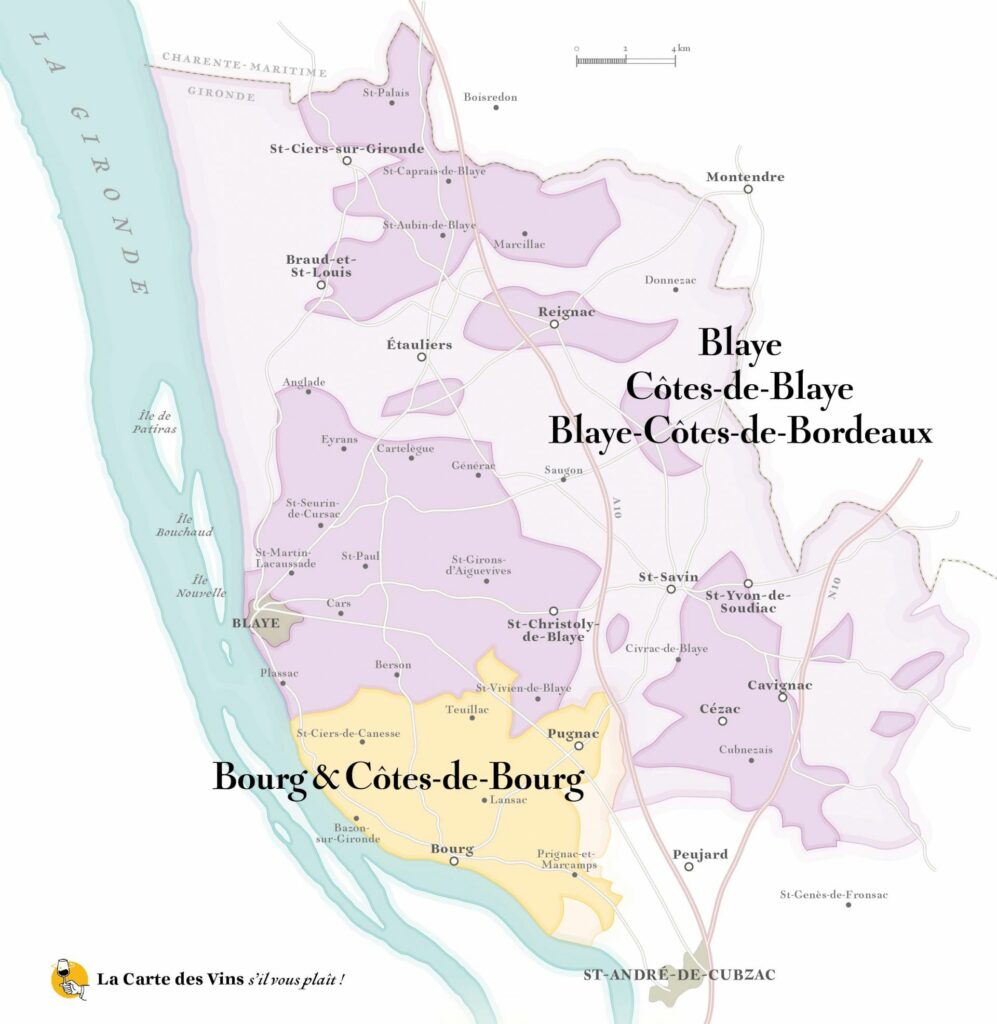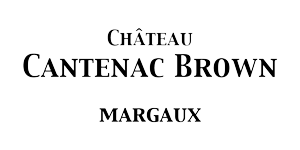The Bordeaux vineyard is divided into 6 wine regions: Médoc, Graves, Sauternais, Entre-Deux-Mers, Libournais and Blayais-Bourgeais.
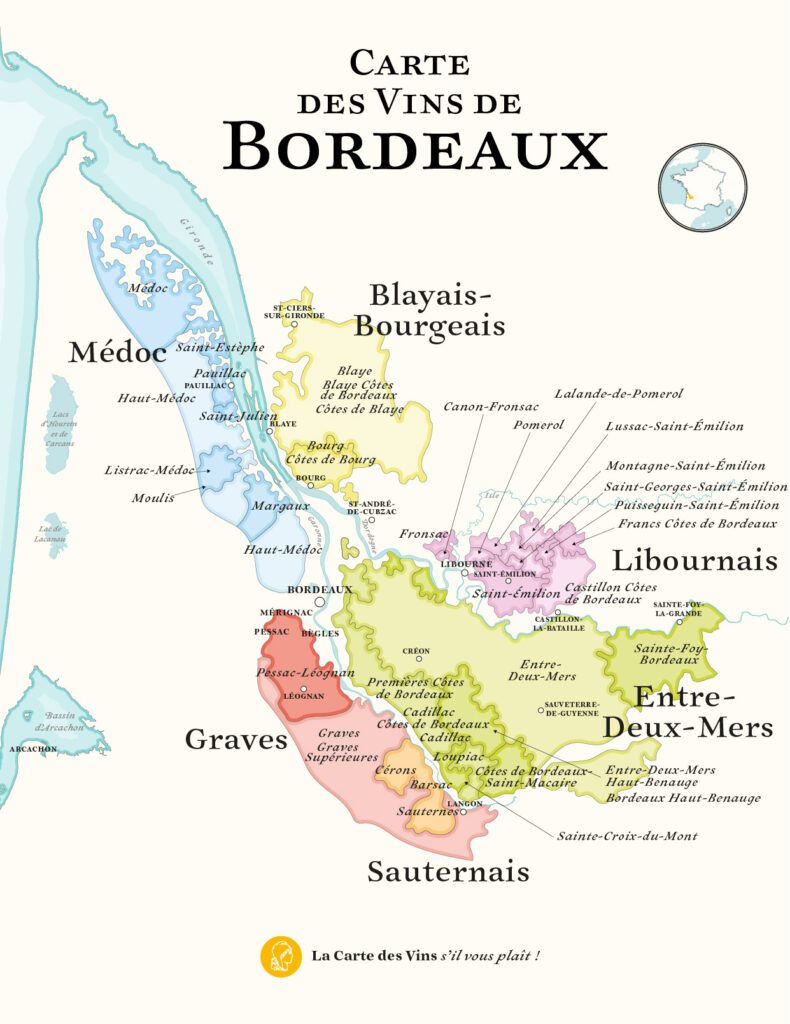
The grape varieties of the Bordeaux vineyard
It is important to know that all Bordeaux wines are blended wines. This means that two or three grape varieties are vinified separately before being blended during bottling.
The following grape varieties are mainly found in the Bordeaux vineyards:
- Red: Merlot, Cabernet Sauvignon, Cabernet Franc
- White: Sémillon, Sauvignon Blanc, Muscadelle
The sub-regions of the Bordeaux vineyard
1° : Médoc
16 000 hectares I 99% red and 1% white
The Médoc vineyard is delimited from the Jalle de Blanquefort (north of the Bordeaux agglomeration) to the Pointe de Grave, and from the Gironde estuary to the Landes forest.
There are 8 appellations in the Médoc:
- AOC Margaux (Château Cantenac Brown)
- AOC Moulis-en-Médoc
- AOC Listrac-Médoc
- AOC Saint-Julien
- AOC Pauillac
- AOC Saint-Estèphe
- AOC Médoc
- AOC Haut-Médoc
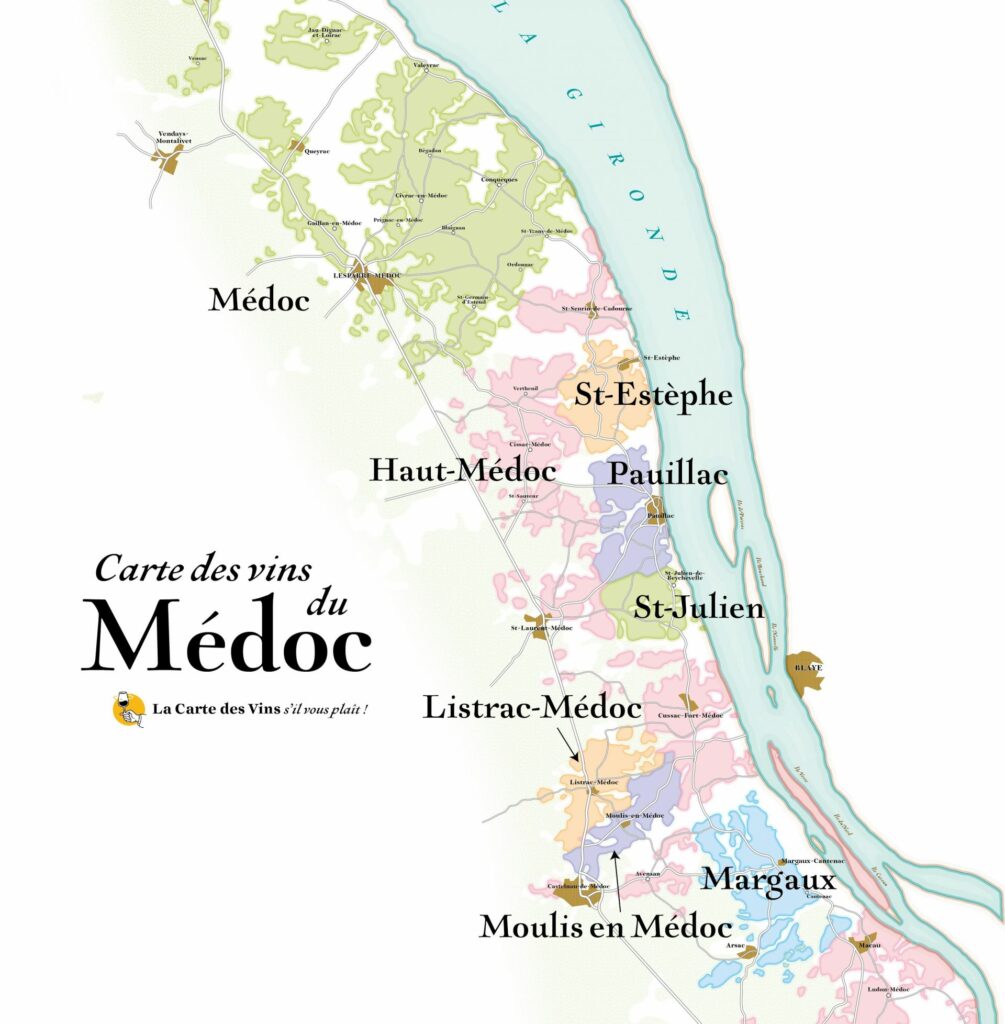
Today there are 61 red 1855 Grand Cru Classified Growths spread over five levels. These wines are located in five appellations of the Médoc: Saint-Estèphe, Pauillac, Saint-Julien, Margaux and Haut-Médoc. Among them, only one is not in the Medoc but in the Graves.
2° : Graves
4,800 hectares I 75% red and 25% white
This region owes its name to its terroir and more particularly to the gravel (gravas in Gascon) which composes it. Carried thousands of years ago by the Garonne River, these gravels play the role of thermal regulator for the vine. Indeed, gravelly soils are said to be “hot” soils, in the evening they give back to the vine the heat of the sun stored up during the day.
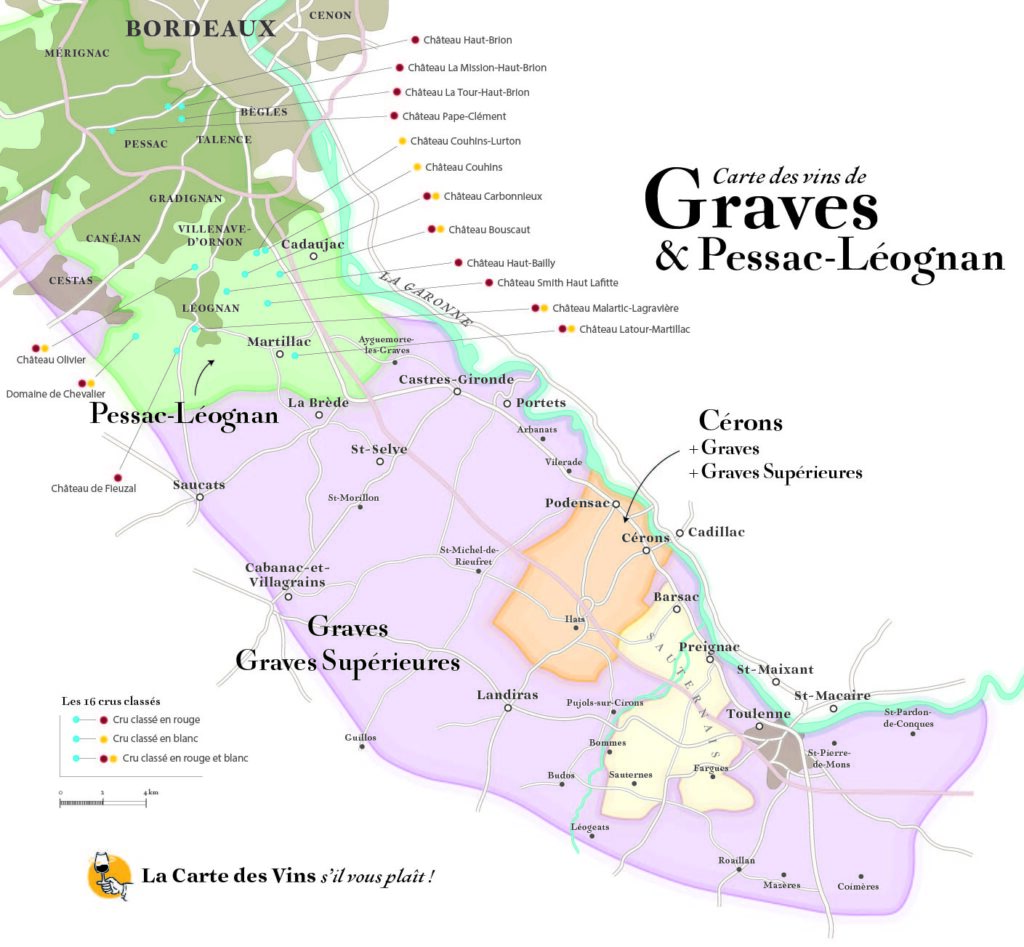
3° : Sauternais
1,800 hectares I 100% white (sweet)
Sauternes is one of the most prestigious sweet wines in the world. It owes its singularity to the microclimate of the region.
The region includes 2 appellations:
- AOC Sauternes
- AOC Barsac
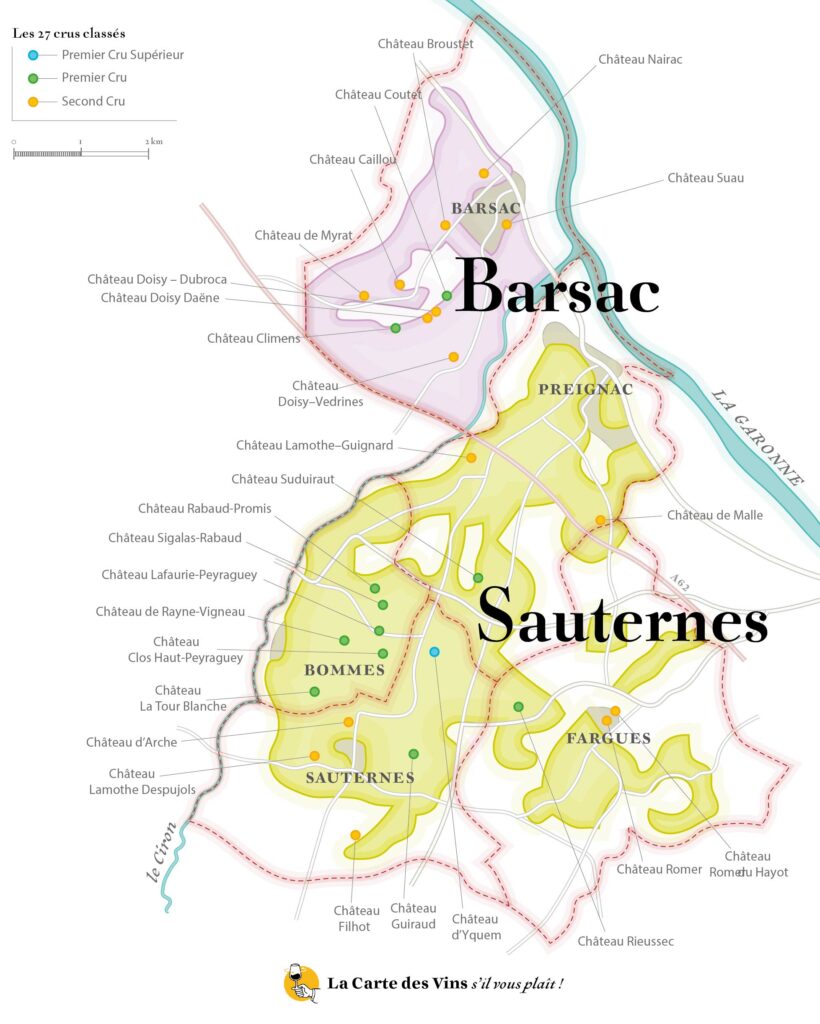
4° : Entre-Deux-Mers
30 000 hectares I 70% red and 30% white
The Entre-Deux-Mers vineyard produces mainly under the generic name “Bordeaux”. Only 1,500 hectares of the Entre-Deux-Mers region are classified as AOC Entre-Deux-Mers.
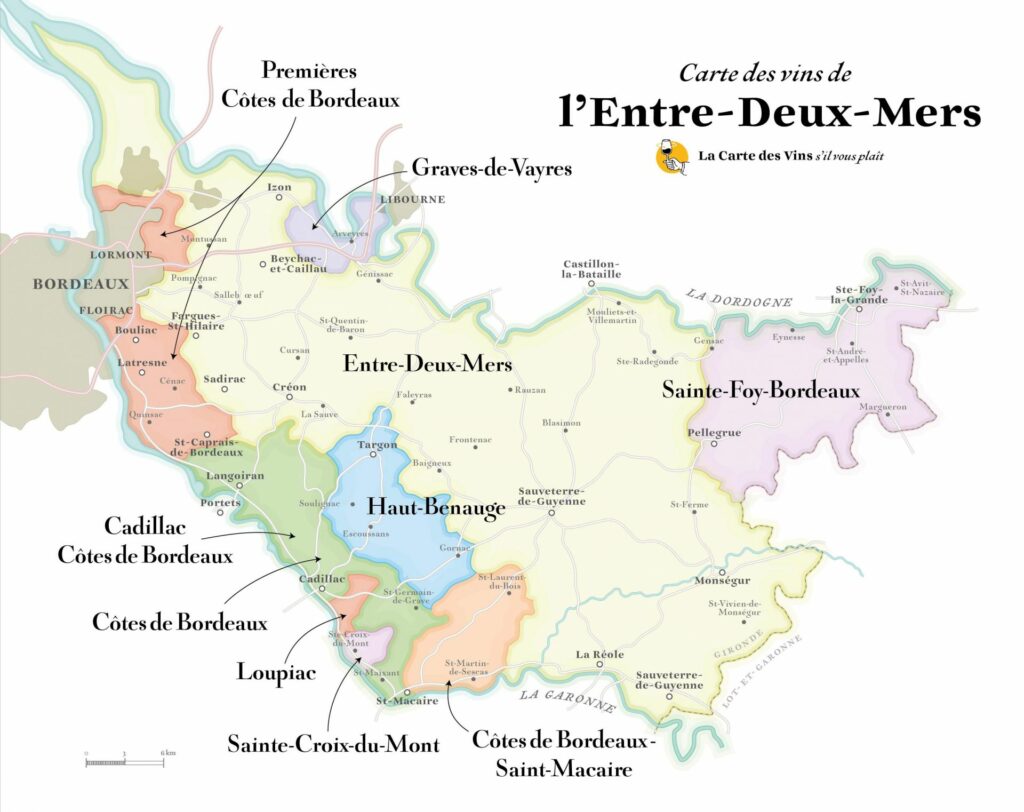
5° : Libournais
12,500 hectares I 99% red and 1% white
Among its most emblematic appellations we find “Saint-Emilion” (5,400 hectares), “Pomerol” (800 hectares) or “Fronsac” and “Canon-Fronsac” (1,000 hectares).
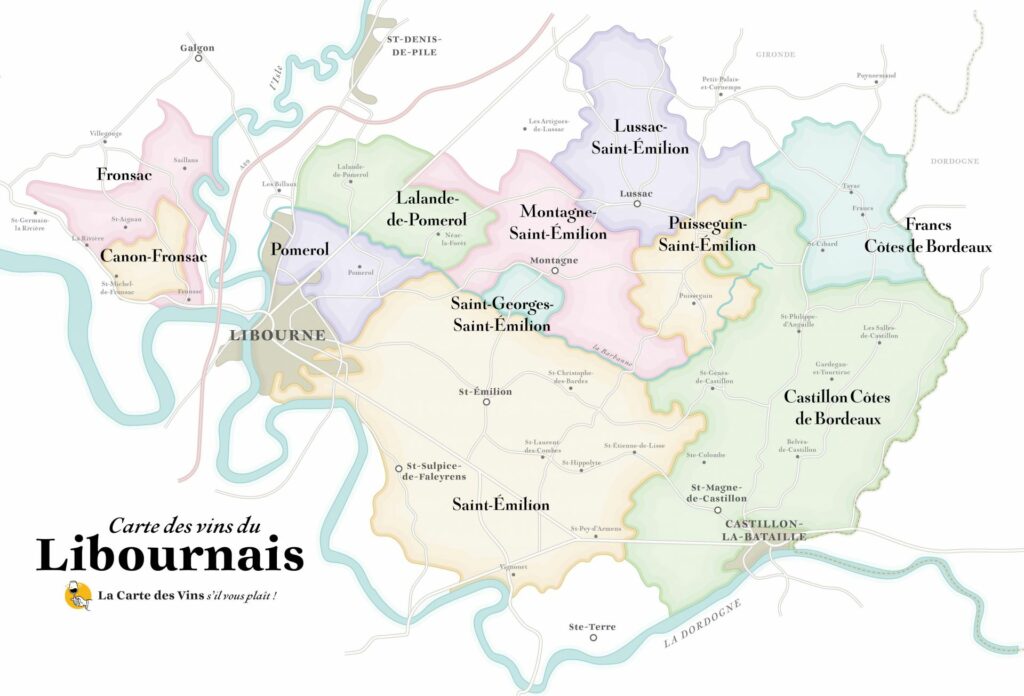
6° : Blayais-Bourgeais
9,900 hectares I 75% red and 25% white
This region enjoys a microclimate that is conducive to the cultivation of vines. The huge body of water of the Gironde estuary, located nearby, softens the banks. The Bourgeais, on slopes with varied exposures, is a succession of microclimates.
